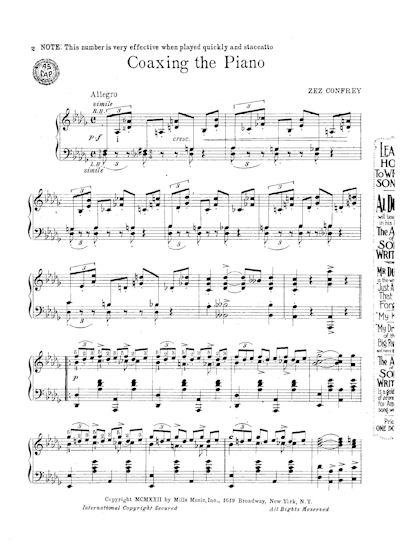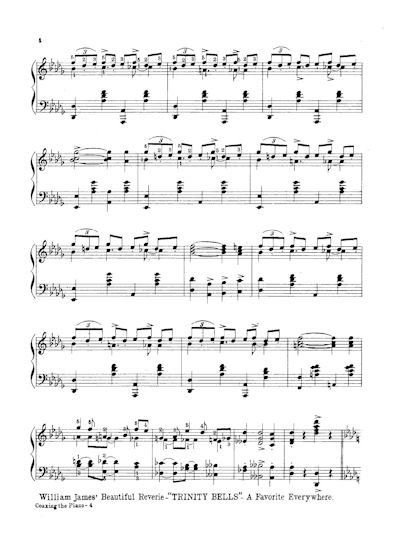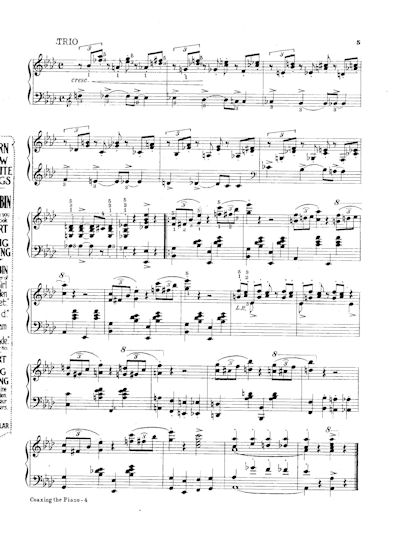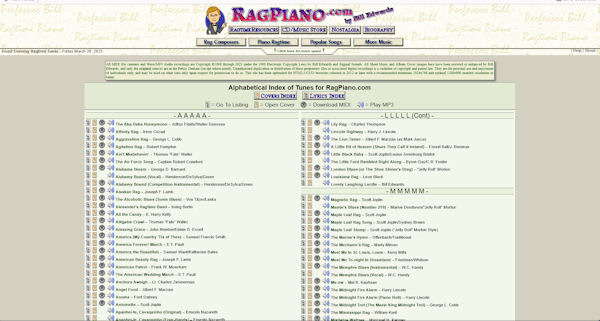





Sam Hallas' Website
Each year on International Piano Day I have tried to post a YouTube video on a piano theme. I first posted video of me playing Irving Berlin's popular piece, 'I love a piano' and after that I played 'The old piano roll blues'.
I love a piano The old piano roll blues
Following those I bemoaned the lack of tunes with 'piano' in the title. A helpful correspondent suggested Zez Confrey's 'Coaxing the Piano' as a suitable candidate. Zez had already had success in 1921 with 'Kitten on the keys'. He followed it up with a string of similar style novelty pieces: 'You tell em ivories', 'Greenwich witch'; and the song 'Stumbling'. 'Coaxing the piano' came along in 1922 and is technically even more challenging than 'Kitten'. It was eclipsed the same year by 'Dizzy Fingers' which is not only very jolly, but easier to play.






As a result I haven't made a Piano Day video with me playing 'Coaxing the piano'. Instead in 2025 I started a quest to visit public pianos in London. However, I wondered if I could make something with 'Coaxing' after all. I turned to my store of MIDI piano pieces. MIDI is a computer file format that can represent a musical performance. (See the Wikipedia entry) for more.
The go-to resource for ragtime and novelty music is ragtime guru, 'Perfessor' Bill Edwards. And sure enough his alphabetical list of tunes (click the link on the image) contains 'Coaxing the piano' by Zez Confrey. First step was to download the file. Coaxing the piano.mid

But that wasn't good enough. What was needed was somoething visual. How about the image of a player piano playing the music? A search found exactly what I needed. The video posted by pianmn199 contains video of a piano roll arranged and created by the great and late John Farrell of the piece in question.
The joy of a MIDI file is that one has freedom of choice for the instrument used to play it. The choice is huge. Concert grand piano would be obvious, but what would it sound like played on bagpipes? Pretty weird is the answer in case you feel like trying it. I've used a program called Synthfont to play MIDI files. It allows not only a wide choice of synthesised instruments but allows playback at variable speed and allows transposition of the music.
I decided that a slightly honky tonk piano was what was needed so Dr Google was called to find a suitable sound font. The 'old piano' available as a free download from Freepats sounded just right. Here's the audio file I generated.
Coaxing the piano - Bill Edwards on honky-tonk piano
The structure of 'Coaxing' is fairly typical of ragtime. An 8-bar introduction leads to the 16-bar main theme. The melody is played with the thumb while the other fingers play rapid triplet decoration above. This section is repeated. A second 16-bar theme with an accented melody staccato in the left hand follows and is repeated. The first section is heard again just once. The trio is set in the dominant key and starts with a florid 8-bar intro. The 16-bar trio theme is rather dull - just twiddliness for it's own sake. The printed musics stops there but Bill Edwards performance rounds it off by repeating the intro and first section to give a better ending.
I've concentrated on the main theme and set the tempo to be 85% of the MIDI file as issued which give a better feel of the melodic structure. That's easily done in Synthfont. It also outputs to a .WAV file for later editing. It's also quite easy to follow the tune on the piano roll as the player bar shows through the paper making editing the video simple.
I stitched the audio and video together in Corel Video Studio which is where I was able to adjust the video playback to synchronise with the sound by adjusting the video speed.
Here's the finished video on YouTube. The eagle-eyed will spot that, when the section repeats, the piano roll shifts the melody up an octave - the punched holes move over to the right - whilst the audio stays at the same pitch.